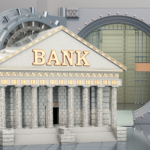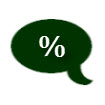By: Shmuel Shayowitz
As I predicted, the Federal Reserve raised interest rates by 25 basis points this past Wednesday. It was one of the most important meetings for Jerome Powell and The Fed since they began their quantitative tightening monetary policy last year. It was the first session immediately coming off a tumultuous banking crisis, which put Powell in a very tough predicament.
If he capitulated and didn’t hike rates, many would be concerned that underlying issues in the banking sector were forcing them to stop the monetary tightening. At the same time, after their last FOMC meeting in March, Powell warned a Senate committee that inflation was still stubbornly high and more rate hikes were forthcoming. So the market prepared for a 50bps hike in March and at least another 50-75 over the next few meetings. I said it would never pan out, and we see that come to fruition now.
“Financial conditions seem to have tightened, and probably by more than what the traditional indexes say,” said Fed Chair Powell. He suggested that tighter financial conditions caused by more stringent lending decisions from banks could have a similar impact as further hikes from the Fed would. He emphasized that the banking system is “sound and resilient.” I’m not sure he believes that, however!
 I was recently interviewed by a reporter from a major real estate publication in the aftermath of the SVB, Signature, and Credit Suisse collapses to discuss the impact on the markets. It was an emergency piece he was working on with a tight deadline. Amongst our discussion about the short-term “flight to safety,” where money poured into treasuries, thereby causing yields and mortgage rates to drop, I also emphasized that these bank failures were not an issue about delinquent loans, poor lending standards, or the like.
I was recently interviewed by a reporter from a major real estate publication in the aftermath of the SVB, Signature, and Credit Suisse collapses to discuss the impact on the markets. It was an emergency piece he was working on with a tight deadline. Amongst our discussion about the short-term “flight to safety,” where money poured into treasuries, thereby causing yields and mortgage rates to drop, I also emphasized that these bank failures were not an issue about delinquent loans, poor lending standards, or the like.
I continued, “Aside from the quick drop in interest rates, we didn’t see any change whatsoever in buyer sentiment or banking policy.” Aspiring buyers were still out there house-hunting, and banks were still assertively lending. He kept pressing with more questions to pin me down to say this would cause a meltdown or panic in the marketplace, but I wasn’t having it. I supported my opinion by telling him that even the ‘new’ SVB Bank that the FDIC took over was open for business and continuing to loan money as if nothing had happened. He paused and finally said, “so there is no story here?” He never printed his article.
I believe there is no story here… yet. I think the intervention tactics that The Fed employed to shore up First Republic Bank and many other regional banks are significant. The Fed created a new Bank Term Funding Program (BTFP), offering loans of up to one year in length to banks, savings associations, credit unions, and other eligible depository institutions pledging U.S. Treasuries, agency debt and mortgage-backed securities, and other qualifying assets as collateral. This was implemented to help banks that own securities that are now underwater because of the rapid increase in rates. It is anticipated that there would be over $600 billion in projected loan losses if those assets were to be reported on paper today. Through creative banking policy, those shortfalls can continue to be “ignored” indefinitely.
Furthermore, another creative tactic was that the Department of the Treasury would make available up to $25 billion from the Exchange Stabilization Fund as a backstop for the BTFP. Ironically, First Republic Bank alone required more than that. The Fed orchestrated that JPMorgan Chase and a consortium of ten large banks deposited $30 billion into First Republic Bank to give the stressed regional bank needed liquidity to get through the crisis. Any direct intervention by the Fed would seem inappropriate and highly scrutinized. Instead, they had their ‘friends’ intercede on their behalf.
At a recent hearing, Oklahoma Republican Sen. James Lankford bluntly asked Treasury Secretary Janet Yellen whether the administration’s policies might encourage people to move their money out of small banks and into big banks. “Will the deposits in every community bank … get the same treatment that SVB just got, or Signature Bank just got?” Treasury Secretary Yellen did not confirm that they will, but made it quite evident that the average depositor will be more protected at the “big banks.” There is undoubtedly a story brewing here, but not the one the Fed wants people to read!
 Shmuel Shayowitz (NMLS#19871) is President and Chief Lending Officer at Approved Funding, a privately held local mortgage banker and direct lender. Approved Funding is a mortgage company offering competitive interest rates as well as specialty niche programs on all types of Residential and Commercial properties. Shmuel has over 20 years of industry experience, including licenses and certifications as a certified mortgage underwriter, residential review appraiser, licensed real estate agent, and direct FHA specialized underwriter. He can be reached via email at Shmuel@approvedfunding.com.
Shmuel Shayowitz (NMLS#19871) is President and Chief Lending Officer at Approved Funding, a privately held local mortgage banker and direct lender. Approved Funding is a mortgage company offering competitive interest rates as well as specialty niche programs on all types of Residential and Commercial properties. Shmuel has over 20 years of industry experience, including licenses and certifications as a certified mortgage underwriter, residential review appraiser, licensed real estate agent, and direct FHA specialized underwriter. He can be reached via email at Shmuel@approvedfunding.com.
Please Complete This Form To Get In Touch With Shmuel


















